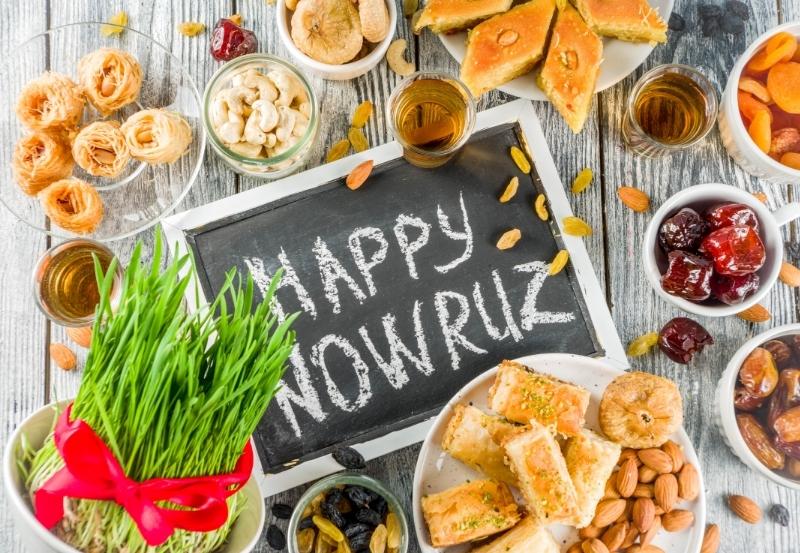The history of Nowruz dates back to the 1st century BC. It originated in what is now Iran. In this country, the summer solstice also heralds the new year at the same time.
In countries that did not emerge from ancient Persia, they do not celebrate the New Year, but the timing is still the same every year. Nowruz is celebrated on either March 20 or March 21.
Do you want to learn more about this important festival and know in which countries people still celebrate Nowruz today? Then you should read on. In this article, you will learn, among other things, about the history of Nowruz and the traditions and customs associated with it.
It is – like the famous German Oktoberfest– one of the most exciting festivals you will experience in your whole life.
Where Nowruz is Celebrated?
The summer solstice festival is still celebrated today, mainly by people who share a common history with ancient Persia. These include not only present-day Iran but also countries such as Tajikistan and Afghanistan.
However, the tradition has now spread much further, and even in East Africa, there are countries where people celebrate Nowruz exuberantly.
In addition to the Persians, there were also various provinces in the Ottoman Empire, where this holiday was one of the most influential of the year.
Since the last century, Nowruz has spread far beyond today’s Iran. Especially Turkey, Iraq, Syria and various countries in the Balkans today celebrate this festival, which originated in ancient Persia. Meanwhile, there are even people from Russia who celebrate Nowruz with enthusiasm every year.
In 2010, the United Nations officially recognized the day on which Nowruz is celebrated as an internationally significant holiday. This is almost certainly due to the fact that there are now over 300 million devotees who celebrate the Iranian New Year annually. The more than 3,000 years of history have also ensured this recognition.
Meanwhile, Nowruz has also been recognized by UNESCO as culturally significant. For this reason, this holiday has been included in UNESCO’s list of Masterpieces of the Oral and Intangible Heritage of Humanity since 2009.
Nowruz in the Past
In the past, Nowruz was primarily a large folk festival. People used to gather in different squares and streets. They would light fires and splash water on each other. You see, even back then, people knew how to have a huge amount of fun with simple means. One of the highlights in those days was the equestrian games.
On that day, various oppressed peoples also came to Persia. These brought various gifts to the Persian king. After Persia was Islamized from the middle of the 7th century, this holiday was held on different days. For some time, Nowruz was celebrated towards the middle of June, but since the late 11th century, the festivities have again taken place in March.
In the course of the 20th century, the Persian festival of the summer solstice gained more and more importance, mainly due to the fact that Nowruz was primarily associated with resistance against oppression in Persian mythology.
Nowruz Traditions and Customs
To this day, Nowruz is a popular festival among different people. To celebrate the new phase of the year, the celebrating people put on new clothes. Moreover, the summer solstice also marks the end of winter – as a sign of this, they light bonfires. Around them, mainly the men and boys jump and dance; some even sing. The women, on the other hand, have prepared the feast.
Musical entertainment is also not to be missed at Nowruz. Often, the organizers of the festivities even hire their own band for this purpose. Many of the artists move from one gathering to another. The music they play depends on the taste of the musicians. They can perform both traditional and politically motivated songs.
Haft Sin
Closely connected with the tradition of the Persian New Year is Haft Sin. The name translates as “Seven S’s”. The origin behind it lies in the fact that the elements with which the table was decorated all had the initial letter S: Sekke (coins), Sib (apples), Somach (a Persian spice), Sombol (hyacinths), Sir (garlic), Sabseh (wheat) and Serke (vinegar).
In addition to Haft Sin, Haft Mewa also plays an important role in celebrating Nowruz. This is a drink, for the preparation of which 7 different fruits are used. Again, it is essential to note that the ingredients must all begin with the letter S.
Behind the tradition of the seven identical initial letters is the ancient belief of Zoroastrianism. The seven S’s symbolize the seven virtues of the Zoroastrians.
In other countries, the traditions can vary. In Turkey, for example, Baklava is very popular on Nowruz day.
Chahar Shanbe Suri
The tradition of Chahar Shanbe Suri takes place before the day people officially celebrate Nowruz. The name means something like “Wednesday fire”. It is lit – as you can guess from the name – on the last Wednesday before the official holiday.
The night before, children dress up and parade around the houses. They bang on pots and pot lids and receive sweets and small gifts from the residents in the neighbourhood.
Now you have a small overview of the historical tradition behind Nowruz. The fact that this festival has survived to this day – albeit with some minor changes – shows how important this day was to the ancient Persians.
Have you already participated in the festivities of the Iranian New Year, or would you like to do so? Then it is high time that you enjoy this ancient custom. We are sure that even after years you will always remember this day with pleasure.

